Cold months are here, and we have compiled a list of the Best Winter Houseplants. Know How to Take Care of Indoor Plants in Winter.

Whether you are an indoor all-time plant enthusiast or just a beginner, this winter, get ready to exercise your green fingers. You would be surprised that there are plenty of choices you can look at and understand if they are suitable for your home. Grow these Best Winter Houseplants in your bedroom or bathroom. Check out our useful tips on How to Take Care of Indoor Plants in Winter.
Find the Best Indoor Plants That Grow All Winter here
How to Take Care of Indoor Plants in Winter
Before moving your plants back inside for the long winter, it is best to follow these instructions carefully to learn How to Take Care of Indoor Plants in Winter.
Before you begin, it is important to do your own small research about all the houseplants you have and their winter needs. It will help you because different species can have different needs. For example, a poinsettia plant will have different needs than a trailing succulent vine or a geranium growing in a container.
It is best to try to mimic the conditions of the colder months where these species naturally grow.
What You’ll Need:
- Plant Mister
- Watering Can
- Room Humidifier
- Heating Mat (Optional)
Now that you know the preparations and the things you will need, you can start following these steps to learn everything about How to Take Care of Indoor Plants in Winter.
1. Adjust the Watering Schedule
Most indoor houseplants require lesser watering in the winter, with some plants not needing any watering at all. It is right that in winter, the air is drier, but plants have a slower growth rate. Some of your plants will enter a dormant phase and need negligible watering.
So, keep all these things in mind and re-arrange your watering schedule according to each plant’s needs.
Here are Signs of Overwatering & How to Save an Overwatered Plant
Pro Tip:
Avoid using cold water while watering the houseplants in winter, as it can shock their roots. Even tap water can be quite cold for them, so it is best to keep the watering can in the sun for a few hours and allow it to be lukewarm.
Have a look at some fun indoor gardening projects here
2. Change Humidity Levels
Air is dry during the colder months, and a low humidity level can be an issue for the houseplants. In most homes, the humidity levels can drop down to 10-20 percent only, while your plants may love a level of 50-70 percent.
So, in such instances, place a humidifier in your home and keep similar plants together with the same humidity needs. Alternatively, you can try grouping plants with similar needs to raise the humidity level or keep them in the bathrooms or kitchens where the moisture is higher.
Also, you can place a tray of water with pebbles and water to raise the humidity level. Try misting if these tricks also do not work, using a medium-sized bottle with warm water once every 2-4 days, depending on the species. You can also use a humidifier.
Check out these Ways To Increase Humidity For Houseplants That Work
3. Give Some Sunshine
In winter, the days are shorter, so the sunshine hours are fewer. Also, the sunlight comes from a lower angle, so you may need to relocate the houseplants to a sunnier location.
The best place to grow them indoors in winter is near a west or south-facing window.
Pro Tip:
Avoid placing your houseplants near a cold draft or window, and keep rotating the containers to ensure overall growth.
Check out some amazing indoor vegetable garden ideas here
4. Maintain the Right Temperature
Plants are more comfortable during the days of winter. So, remember that most plants grow well in a temperature range of 60-75°F or 15-23°C. It is best to maintain the night temperature above 50°F or 10°C.
You can use sources like ovens, fireplaces, radiators, electric heaters, and such to maintain the temperatures indoors.
Learn about Lawn Care in Winter here
5. Watch the Diet of Your Houseplants
Most plants during winter need no fertilizers as they do not grow actively in these cold months. Stop feeding the houseplants, as it can upset the natural cycle. You can resume in early spring.
However, remember that some of your tropical houseplants may be growing actively in winter and need some feeding at a diluted rate.
Have a look at the best herbs you can grow indoors here
Best Winter Houseplants
1. Jade Plant
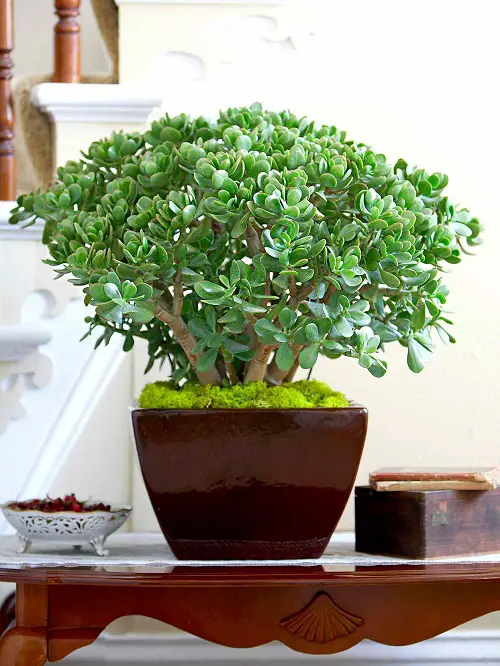
Botanical Name: Crassula ovata
Jade plants can make for one of the Best Winter Houseplants. Keep it on your kitchen countertops with similar kinds of plants.
2. Oxalis
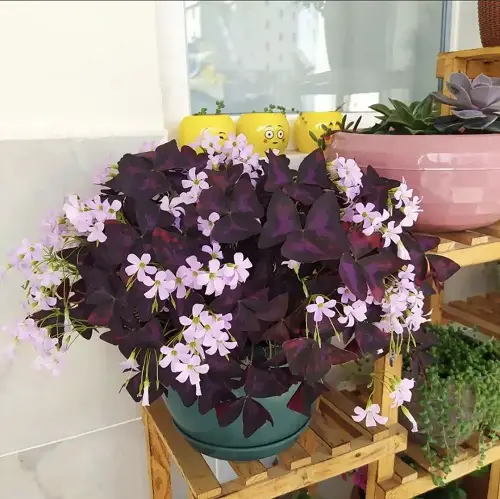
Botanical Name: Oxalis
Oxalis can be another top pick from the list of Best Winter Houseplants. With bell-shaped flowers and purple leaves, it is a beautiful, low-maintenance, decorative houseplant.
3. Amaryllis
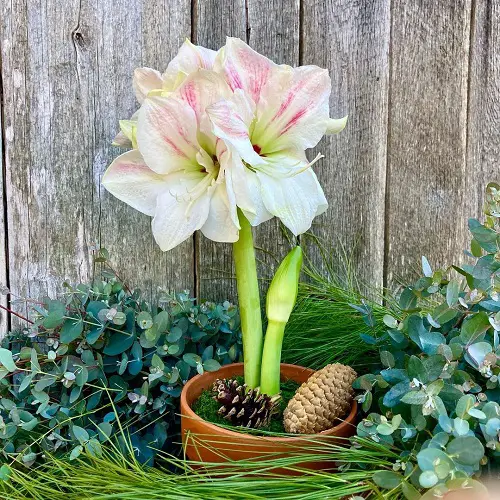
Botanical Name: Amaryllis
Amaryllis bulbs can produce trumpet-shaped, stunning flowers in shades of red, orange, rose, burgundy, and pink.
Learn How to Grow Amaryllis in Pots here
4. Pothos
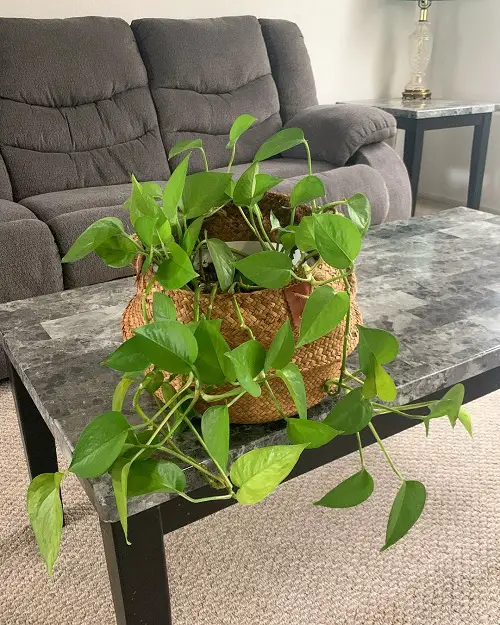
Botanical Name: Epipremnum aureum
Pothos are known for their durability and low maintenance, making them perfect for winter. They are also one of the best feng shui plants that positively affect your home.
5. Spiderwort
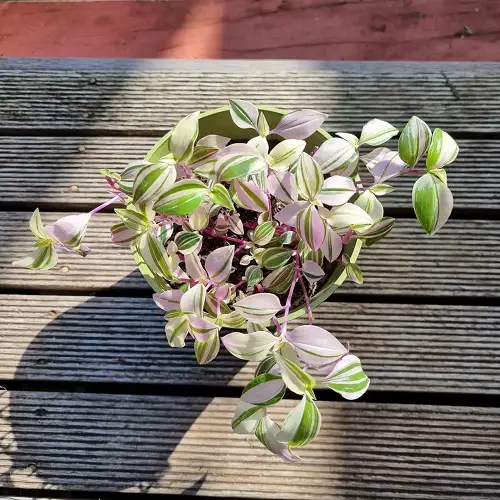
Botanical Name: Tradescantia
Tradescantia is a plant species of Spiderwort, also called the Wandering Dude is native to South America. It grows well in homes in winter.
Here are some of the winter flowering shrubs that look good in winter garden
6. Paperwhite
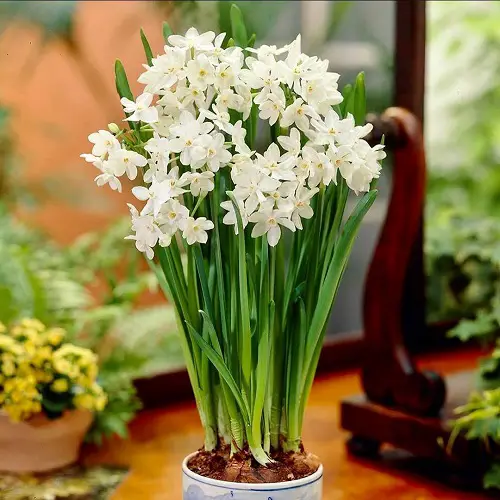
Botanical Name: Narcissus papyraceus
Paperwhites are winter-blooming, fragrant Daffodils that can add the holiday spirit to your otherwise dull winter.
7. Azalea

Botanical Name: Rhododendron spp.
Azalea blooms are often fragrant, two-lipped, and funnel-shaped that can survive well in winter if you provide the right growing condition indoors.
Here are the Most Fragrant Indoor Plants you must grow
8. Aglaonema
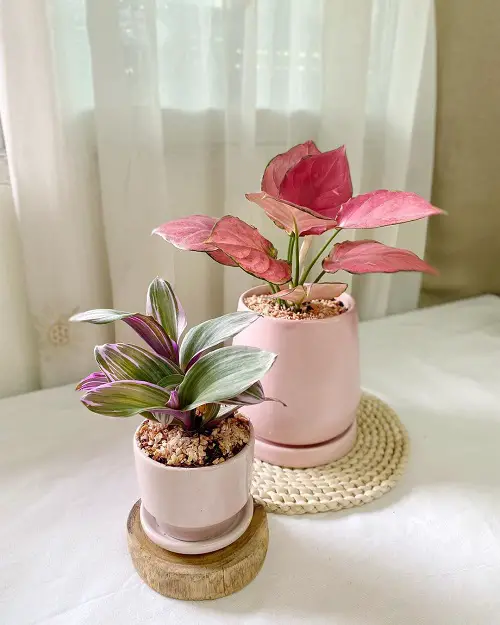
Botanical Name: Aglaonema
Many plant experts suggest that Aglaonema is one of the Best Winter Houseplants. With red or pink leaves, they look stunning in winter homes.
9. Cyclamen
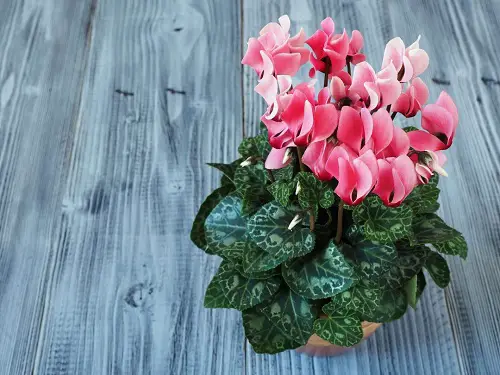
Botanical Name: Cyclamen persicum
Cyclamen can make for one of the Best Winter Houseplants. You can grow this plant in your kitchen with other plants with similar needs.
10. Dwarf Citrus

Botanical Name: C.limon x Sinensis
Dwarf Citrus can thrive best outdoors in summer, but in winter, you can move them indoors. However, make sure to keep the indoor day temperature ideally at 65ºF or 18ºC. It might not fruit, but it will be a great foliage plant.
Look at the Best Flowering Houseplants here
11. Kalanchoe
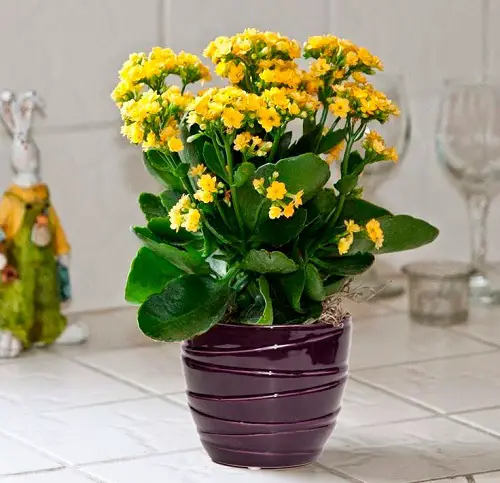
Botanical Name: Kalanchoe
Kalanchoe is a succulent perennial with large umbels of flowers growing in clusters and dark green leaves with scallop edges. It is one of the Best Winter Houseplants.
12. Moth Orchid
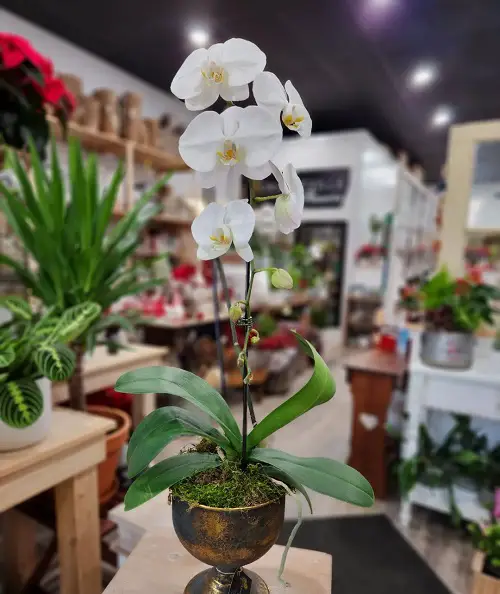
Botanical Name: Phalaenopsis
Another seasonal and classic choice of houseplants for your winter indoor garden! It is best to grow them in the kitchen and bathroom.
Check out Rare Black Orchid Flowers for Home Gardens here
13. Snowdrops
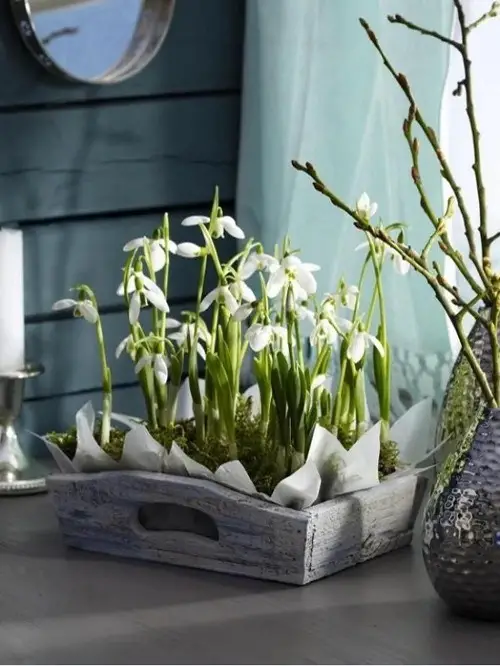
Botanical Name: Galanthus
Are you planning for a winter indoor garden without Snowdrops? It is a bit impossible not to include Snowdrops. They can bring a welcome peak to spring in the winters that can cheer up dreary cold days.
14. Sansevieria
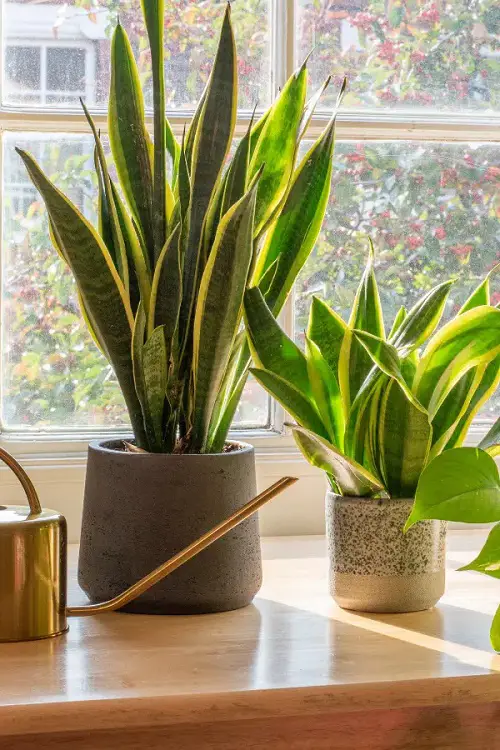
Botanical Name: Dracaena trifasciata
This houseplant is found in many shapes, patterns, and forms that can grow well in deep shade or direct sunlight. It makes them ideal for winter months.
15. Gardenia

Botanical Name: Jasminum
The yellow, pink or white flowers are tubular with lobed, flaring, pinwheel shapes. Jasmine will keep your home sweet-scented in winter.
Look at the Beautiful Shrubs and Bushes with Red Berries here
16. ZZ Plant

Botanical Name: Zamioculcas
This is one of the Best Winter Houseplants for beginner or forgetful gardeners. It is a very forgiving plant that needs less care and feeding once every 6-7 months.
17. Cast Iron Plant
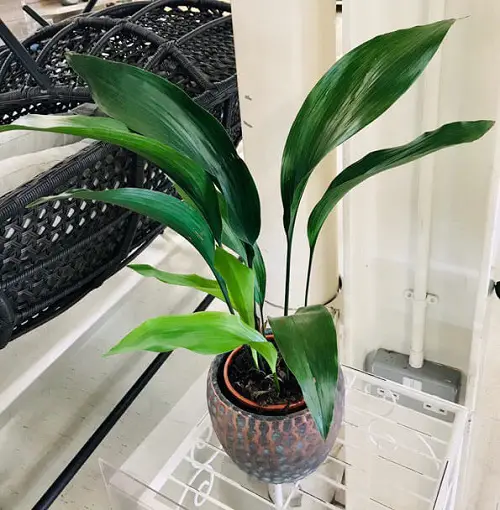
Botanical Name: Aspidistra
Aspidistra is another forgiving houseplant and hence the name. It is known for its hardiness and makes for a perfect winter houseplant.
18. Dracaena Marginate

Botanical Name: Dracaena Marginata
This is another hardy plant that you can choose to add to your winter indoor garden. It is a slow-grower, drought-tolerant, and practically indestructible.
Here are the Most Popular Dracaena Varieties for Indoor Growing
19. Bleeding Heart Vine
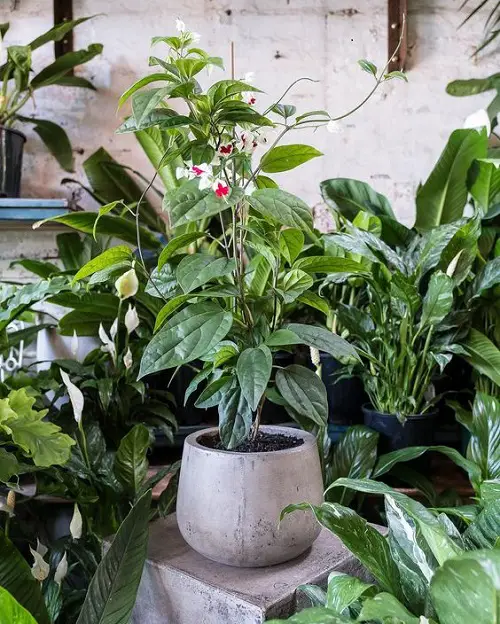
Botanical Name: Clerodendrum thomsoniae
With dark green, striking leaves, Bleeding Heart Vine is a bushy climber. Choose this herbaceous perennial for its blue-green foliage.
20. Anthurium
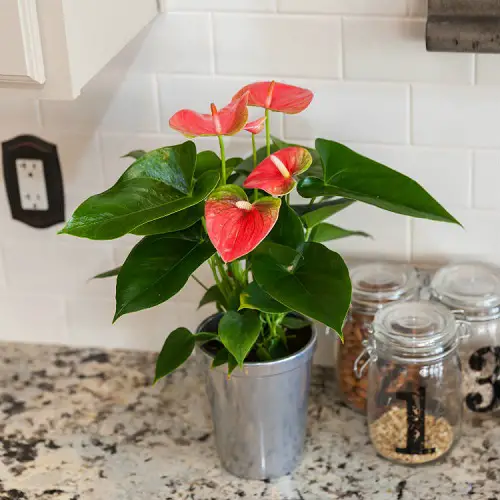
Botanical Name: Anthurium
Anthurium is another such plant that loves well-draining soil and medium sunlight. The bright leaves and waxy flowers will attract bees and birds to your home.
Have a look at the best indoor greenhouse ideas here
21. Money Tree

Botanical Name: Pachira aquatica
Money tree is one of the Best Winter Houseplants as it is tolerant of deep shade. It can also tolerate dry air without crisping or wilting away.
22. Rubber Plant

Botanical Name: Ficus elastica
Another low-light plant that you can grow happily indoors in winter is the Rubber Plant. It loves humid spots in the home and does not need much care. It can also thrive well with a temperature drop.
Learn How to Grow Baby Rubber Plant here
23. Peace Lily

Botanical Name: Spathiphyllum
Peace Lilies are easy-to-grow, sturdy plants with oval-shaped, dark green, glossy leaves with narrow tips. It is an interesting plant to grow in the winter as the leaves directly rise from the soil.
24. Christmas Cactus

Botanical Name: Schlumbergera
The Christmas Cactus can grow in less light and loves a hot and humid environment. So, you can grow this plant in your kitchen or bathroom.
Have a look at some more Succulent Christmas table ideas here
25. Aloe Vera
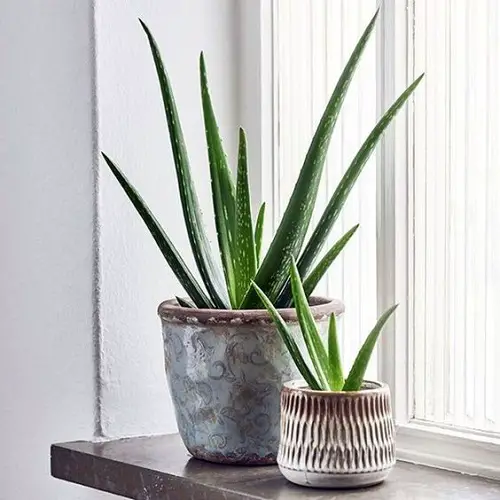
Botanical Name: Aloe vera
Aloe Vera needs bright light, and you can continue to grow it indoors next to an east-facing window. With good care in winter, there is a chance that it can also bloom for you.
26. Desert Rose

Botanical Name: Adenium obesum
This succulent with thick foliage and trumpet-shaped pink flowers can be one of the Best Winter Houseplants. It is a slow-grower and may not need much watering during the colder months.
Check out these Flowers that Look Like Roses
27. Philodendron
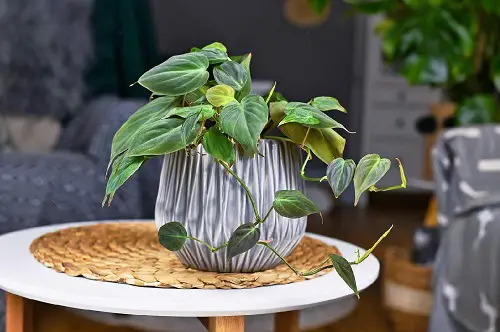
Botanical Name: Philodendron
Philodendron is another popular houseplant that has an easy-to-care habit in any situation. Allow the soil to dry out before watering again, even in winter.
28. Rosemary

Botanical Name: Salvia rosmarinus
Choose to grow this perennial, woody herb that can mature into a bushy shrub. The needle-like evergreen leaves produce an essential oil that gives Rosemary a unique scent.



Great post. I ‘m facing a couple of these problems.
So if I have some questions for this guy or anyone person would I message here? Or would they email me? We just bought a condo and got some house plants from other people and right now they are great but we live in Alaska so come winter I might have much more questions.
I have a plant that grows tall and needs support is there something I could buy to help the plant to grow against?